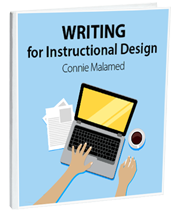
Looking to spice up your eLearning experience? Consider incorporating questions into your design for a more engaging and active learning environment. Traditional expository learning can be replaced with inquiry-based approaches, where learners are encouraged to seek answers and think critically.
But how does this work in eLearning? Let’s explore the benefits of using questions and some design guidelines to get you started.
Here’s A Simple Example
Expository Instruction
Take a look at this expository approach that provides instruction on common graphic formats. The information is presented passively, requiring learners to absorb and retain the content. This method may not be as effective in helping learners remember and apply the information.
Question-based Instruction
On the flip side, a question-based approach promotes active learning by challenging learners to investigate and analyze information to find answers. This method encourages engagement and critical thinking, leading to a more enriching learning experience.
Benefits of Question-based Instruction
When done thoughtfully, incorporating questions in eLearning can have several advantages:
- Curiosity is sparked by relevant and interesting questions.
- Interactivity engages learners and makes learning more dynamic.
- Encourages independent thinking and problem-solving skills.
- Facilitates the construction of knowledge through information gathering.
- Promotes creativity and diverse learning approaches.
Examples of eLearning Designs with Questions
Here are some eLearning design ideas that incorporate question-based learning:
- Scenario-based learning
- Concept identification
- Interactive case studies
- Reflective question wrap-ups
- Problem-solving challenges
Design Guidelines
Consider these guidelines when implementing a question-based approach in your eLearning designs:
- Understand your audience’s knowledge level and provide appropriate guidance.
- Offer structured assistance to help learners navigate the content effectively.
- Choose examples wisely to promote accurate generalizations and understanding.
References: Fleming, M. and Levie, H. (1978). Instructional Message Design: Principles from the Behavioral and Cognitive Sciences (2nd Edition). Educational Technology Publications, 1978.




